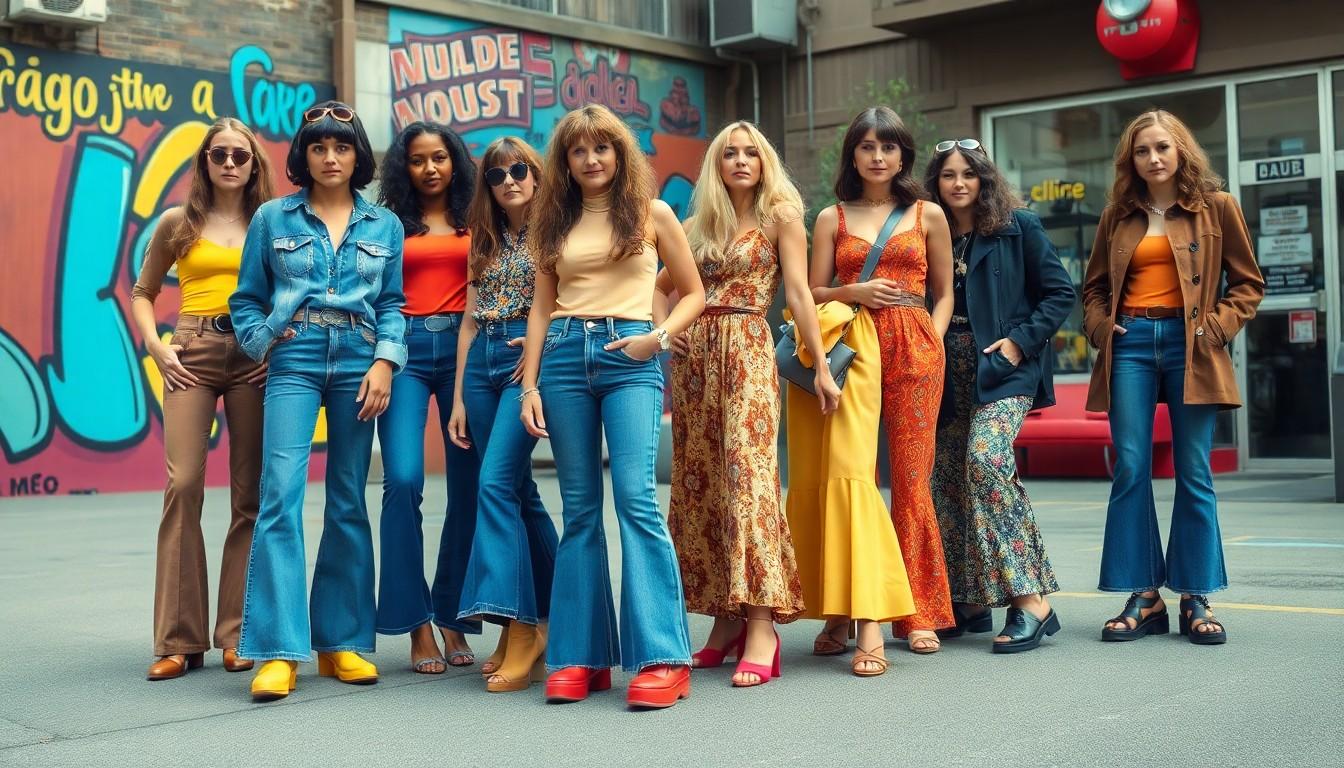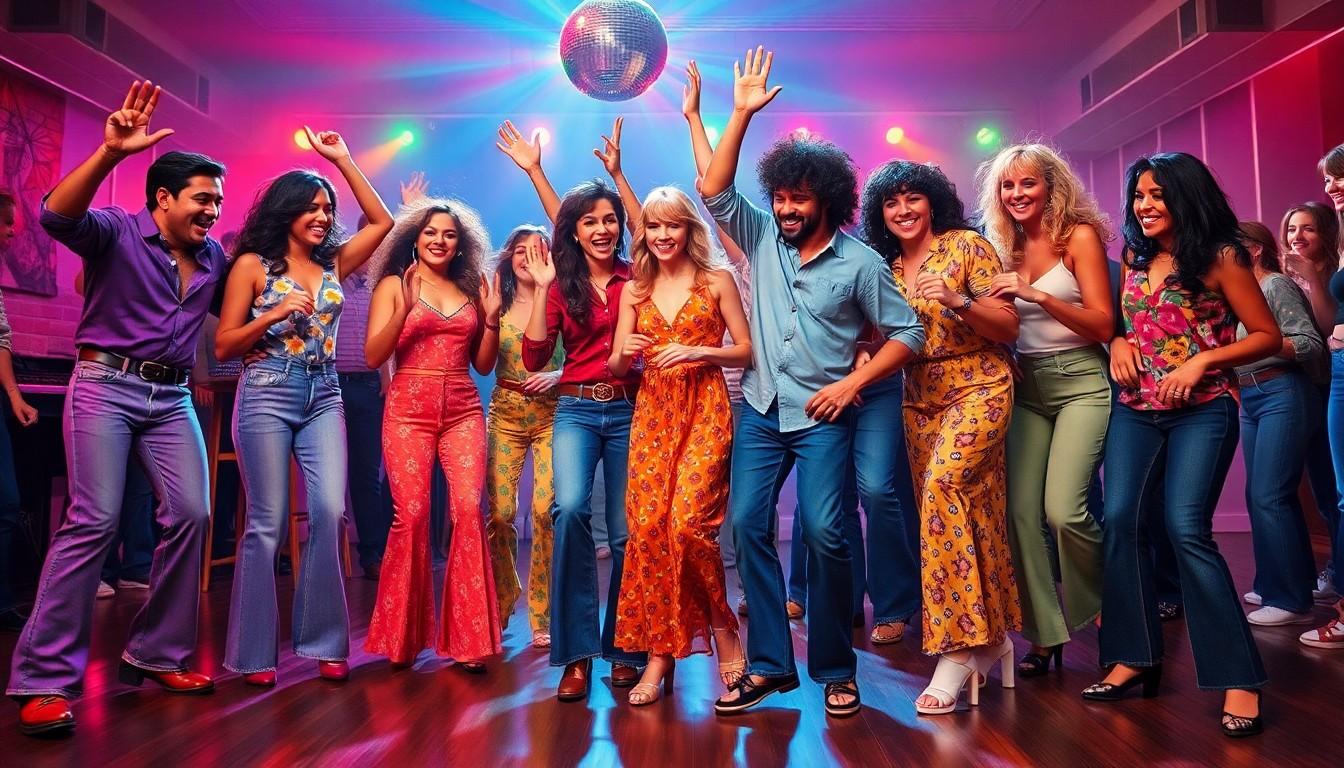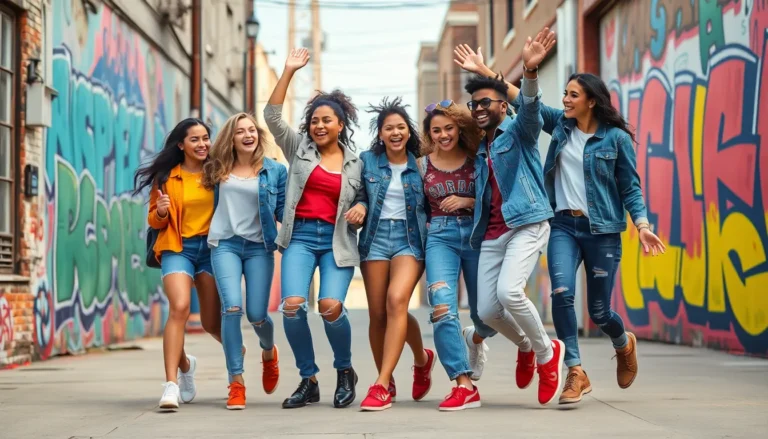The 1970s was a decade like no other, bursting with vibrant cultural shifts that shaped the world as we know it. From bell-bottoms to disco balls, this era was a wild ride of self-expression and rebellion. It’s the time when people embraced freedom, creativity, and a little bit of funk—literally!
Imagine a world where music was the heartbeat of society, fashion was a colorful canvas, and social movements sparked conversations that still resonate today. The 70s delivered everything from the rise of rock ‘n’ roll to the birth of punk, and it did so with a flair that could only be described as groovy. Buckle up as we dive into the unforgettable trends that defined a generation and left an indelible mark on culture.
Cultural Trends Of The 1970s
The 1970s experienced a cultural revolution shaped by various influential movements. Music genres such as rock and disco emerged, reflecting societal changes and individual expression. Iconic bands like Led Zeppelin and The Rolling Stones dominated the scene, while disco clubs flourished, leading to the rise of artists like Donna Summer.
Fashion trends in the 1970s showcased bold styles and personal expression. Bell-bottom jeans, vibrant colors, and platform shoes created a distinctive aesthetic. People adopted hairstyles like afros and long waves, emphasizing self-identity. The punk movement challenged traditional fashion norms with its edgy look characterized by leather jackets and ripped clothing.
Social movements also played a crucial role during this decade. The feminist movement gained momentum, advocating for women’s rights and gender equality. Activists pushed for changes in legislation, culminating in the passing of key laws that furthered women’s rights. Additionally, environmental awareness surged, leading to the first Earth Day celebration in 1970.
Cinema marked another significant aspect of the 1970s cultural scene. Filmmakers embraced innovative storytelling techniques, producing classic films like “The Godfather” and “One Flew Over the Cuckoo’s Nest.” These movies challenged cultural norms and reflected the complexities of contemporary society.
Television changed dramatically, introducing more diverse programming. Shows like “All in the Family” and “MAS*H” tackled social issues, altering the landscape of entertainment. This era also saw a rise in the popularity of miniseries, captivating audiences with compelling narratives.
Overall, the 1970s represented a decade of vibrant self-expression and significant cultural evolution. The lasting impact of this era continues to resonate in today’s music, fashion, and social movements.
Fashion Trends

Fashion in the 1970s reflected an era of individuality and experimentation. Vibrant colors and bold patterns dominated wardrobes, showcasing personal style.
Key Styles
Bell-bottom jeans emerged as a staple, representing freedom and countercultural values. Maxi dresses offered comfort and elegance, while mini skirts remained popular for their playful vibe. Platform shoes gained traction, elevating both height and fashion statements. Layered clothing styles featured, with items like vests and wide-brimmed hats enhancing outfits. Overall, the mix of casual and formal styles provided diverse options, catering to various tastes.
Influential Designers
Several designers significantly influenced 1970s fashion. Yves Saint Laurent introduced the tuxedo jacket for women, challenging gender norms. Halston became synonymous with disco fashion, creating glamorous dresses ideal for nightlife. Diane von Furstenberg’s wrap dress embodied femininity and versatility, appealing to modern women. Meanwhile, Vivienne Westwood played a pivotal role in the punk fashion movement, merging rebellious attitudes with style. These designers left a lasting impact, shaping the decade’s aesthetic and contemporary fashion trends.
Music And Entertainment
The music and entertainment of the 1970s reflected the era’s dynamic cultural shifts and expressive creativity. This decade saw the rise of diverse music genres that shaped a vibrant artistic landscape.
Rise Of Disco
Disco emerged as a dominant musical genre, characterized by its upbeat tempo and danceable melodies. Iconic venues like Studio 54 in New York City became the epicenter of this phenomenon. Artists such as Donna Summer and the Bee Gees defined the sound with hits like “Last Dance” and “Stayin’ Alive.” This genre celebrated dance culture, with energetic rhythms appealing to diverse audiences. By the end of the decade, disco influenced fashion trends, from sequined outfits to platform shoes. As a result, the dance floor became a vital space for social interaction and self-expression.
Impact Of Punk Rock
Punk rock revolutionized the music scene by introducing a raw, rebellious sound. Bands like The Ramones and The Sex Pistols challenged musical norms with short songs and simple chords. The movement often accompanied a provocative fashion statement, featuring leather jackets, ripped jeans, and vibrant hairstyles. Punk’s attitude resonated with youth disillusionment, prompting social commentary through lyrics. Concerts became venues for collective expression against mainstream culture. Around 1977, punk rock established itself as a significant alternative to disco, reflecting the decade’s wider cultural friction and diversity.
Political And Social Movements
The 1970s witnessed profound political and social movements that reshaped societal norms and values. These movements sparked conversations across multiple platforms.
Women’s Liberation Movement
Feminists rallied for equal rights throughout the decade, highlighting issues like reproductive rights and workplace equality. Legislative milestones such as Title IX played crucial roles in advancing gender equity in education and athletics. Activists organized marches and events, most notably the Women’s Strike for Equality in 1970, which attracted thousands of participants. Iconic figures, including Betty Friedan and Gloria Steinem, emerged as key leaders, inspiring future generations. Awareness campaigns emphasized the need for women’s healthcare and legal protections. Cultural shifts began to reflect these changes, with increased representation of women in media and politics. Consequently, the movement laid essential groundwork for ongoing advocacy for women’s rights.
Environmental Awareness
Environmental awareness gained significant traction, culminating in the inaugural Earth Day celebration on April 22, 1970. Activists championed causes such as pollution control and conservation efforts, advocating for sustainable practices. The establishment of the Environmental Protection Agency in 1970 illustrated a governmental commitment to environmental issues. Grassroots organizations formed, mobilizing citizens to participate in clean-up events and conservation projects. Significant publications, like Rachel Carson’s “Silent Spring,” raised awareness about the dangers of pesticide use. Public discourse expanded to include debates on urban development and wildlife protection. Ultimately, the decade marked a pivotal shift toward recognizing environmental stewardship as a vital element of societal responsibility.
Art And Literature
The 1970s marked a significant era in art and literature, reflecting the decade’s cultural shifts and social movements.
Emergence Of New Genres
Various literary genres gained prominence during this period. Science fiction thrived with the emergence of groundbreaking works, captivating readers with futuristic themes. This decade featured significant contributions from authors like Philip K. Dick, whose thought-provoking narratives questioned reality and identity. Moreover, the emergence of the postmodern novel reshaped literary conventions, bringing authors like Thomas Pynchon and Don DeLillo into the spotlight. Poetry also flourished with the confessional style, led by poets such as Sylvia Plath and Anne Sexton, who explored personal experiences and emotions with raw honesty.
Notable Works And Authors
Numerous influential works and authors defined the literary landscape of the 1970s. “Slaughterhouse-Five” by Kurt Vonnegut became iconic for its anti-war themes and innovative narrative structure. “Fear and Loathing in Las Vegas,” penned by Hunter S. Thompson, highlighted the counterculture movement through its vivid exploration of the American psyche. The poetry of Adrianne Rich challenged societal norms and encouraged feminist discourse, solidifying her position as a key figure of the time. Additionally, the rise of graphic novels began with works like “Maus” by Art Spiegelman, blending visual art and compelling narratives, which paved the way for future storytelling forms.
Pivotal Decade in Cultural History
The 1970s stand as a pivotal decade in cultural history marked by bold self-expression and a spirit of rebellion. This era not only reshaped music and fashion but also sparked significant social movements that continue to influence contemporary society. The fusion of diverse genres like rock and disco created a rich musical landscape that resonated with the youth of the time.
Fashion reflected the era’s desire for individuality with daring styles that challenged norms. Meanwhile, the rise of feminism and environmental awareness highlighted the importance of activism in driving societal change. The artistic innovations in literature and cinema further captured the complexities of the decade. Overall, the cultural trends of the 1970s laid the groundwork for future generations, leaving an indelible mark on various aspects of modern life.




